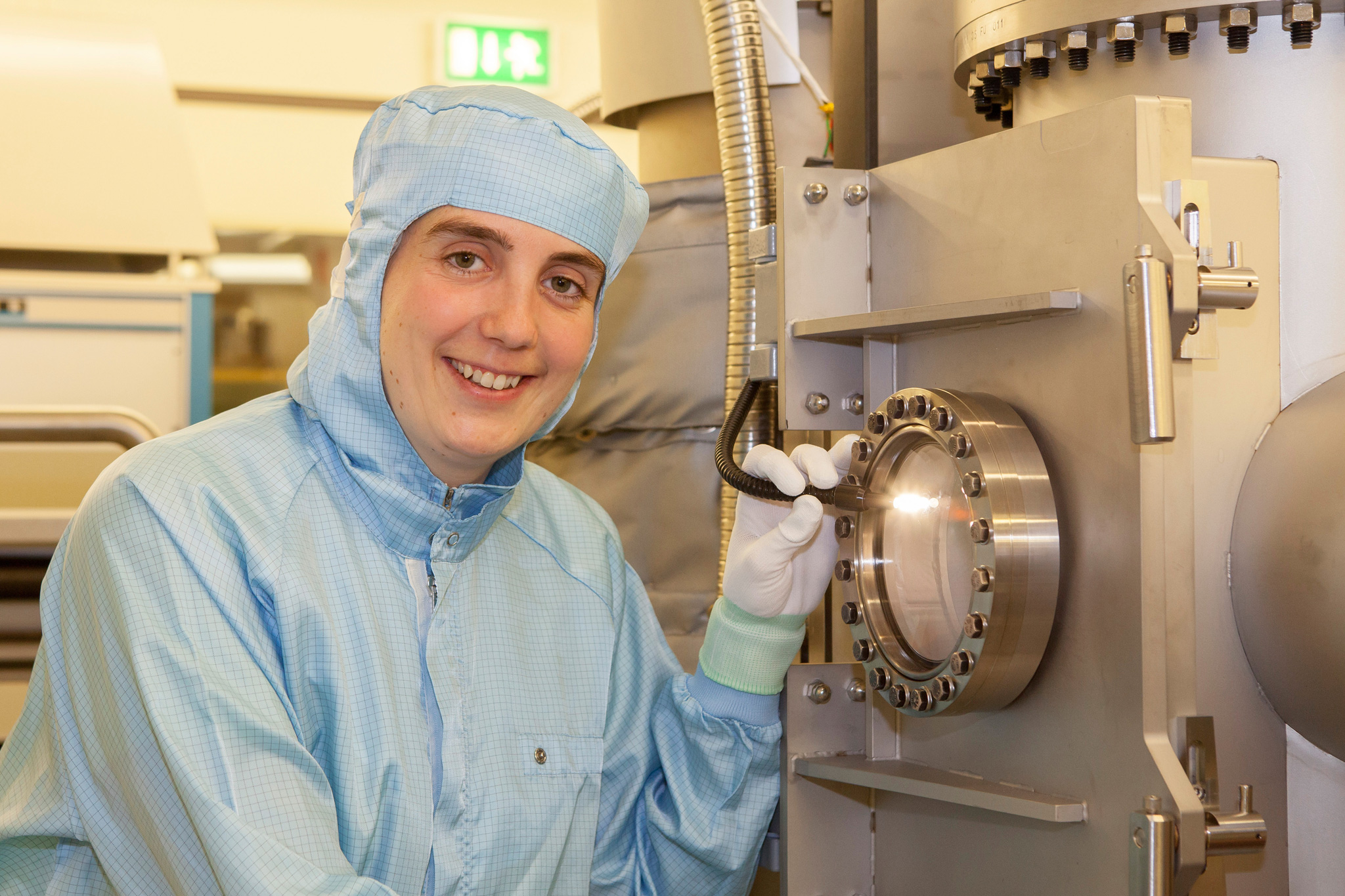
On July 17th, the university society of Ulm conferred its annual PhD awards during the 48th anniversary celebrations of the University of Ulm. Dr. Vera Gramich, scientist at Fraunhofer IAF, was awarded for her excellent scientific works. After specializing in the field of superconductors, the young physicist now dares to enter the new research field of semiconductor technologies at Fraunhofer IAF.
High quality and of special scientific relevance – these were the criteria for conferring the PhD award of the university society of Ulm to Dr. Vera Gramich’s thesis on »Quantum transport at low temperatures in superconducting circuits far from equilibrium«. »This award shows me that I’m on the right track and it motivates me to keep on going and to become acquainted with yet a new field of research«, says Gramich. In spite many offers from international research institutions for job opportunities in her specialist field, she opted for working in applied research at Fraunhofer IAF. Since March 2015, the young physicist works in the field of molecular beam epitaxy and lll-V-compound semiconductor technologies.
What are you researching on at Fraunhofer IAF?
I currently deal with infrared detectors (InAs/GaSb-superlattices), quantum cascade lasers and »high electron mobility transistors« (HEMTs). A specific research focus is yet to be defined. I’ve just started working here and I’m still learning many new things every day, as I worked in the field of superconductors before.
What exactly was the award conferred for and how did it happen?
The award is conferred annually for very good scientific achievements in the scope of a PhD project. Criteria for obtaining the award are, among others, the publications achieved, the time for elaborating the thesis, as well as the relevance for the scientific community.
I didn’t even know I was nominated for the award – the more I was surprised when my supervisor informed me that I will be awarded with the prize!
What topic did you research on for your PhD thesis?
During my PhD project, I dealt with the understanding of light-matter-interaction in superconducting systems, meaning in nanoscopic circuits. I therefore studied the complex interplay of charge transport and photon generation in the quantum regime. This facilitates completely new approaches to the emission of non-classic light with applications in the field of sensing, metrology and nano-electronics.
Which aspects fascinated you about your PhD topic?
A lot! On the one hand the connection of many fields of research, mainly of circuit QED (quantum electrodynamics) with mesoscopic charge transport phenomena, as well as their description with quantum optical methods. This is an exciting and multi-facetted field which is still newly emerging! Furthermore, I really liked working close to the experiment, even though dealing with theoretical matters. The continuous exchange between theorists and experimental physicists is essential for scientific work.
Interestingly, the system I worked on – consisting of a Josephson junction and a microwave resonator – can easily be operated in three different areas: in the classic regime, in the quantum-limit and in between. I consider it especially fascinating, that phenomena of the classical regime are observable in the quantum regime and vice versa. In future, it might thus be possible to realize single-photon-sources with this system.
Can you continue your PhD project’s research work at Fraunhofer IAF?
No, basic research activities are too far away from applied research activities. However, super- and semiconductors have some physical properties in common, such as the energy and band gap – therefore I can contribute and use my knowledge. Besides, I think it’s interesting to widen my horizon and to learn new things!
What motivates you for the research at Fraunhofer?
Research in general is a great environment – we contribute to move the limits of human knowledge. This really fascinates me – I have always asked for the »Why« and have always wanted to know what lies beyond the given matters. I think this suits to the concept of Fraunhofer quite well, as here we constantly work on new solutions and answers.
What has been the »highlight« of your research career and at Fraunhofer IAF so far?
Indeed I had plenty of highlights already – for example my two research stays at the Aalto-University in Helsinki (Finland). The same applies to my two publications in the magazine »Physical Review Letters« – it was a great feeling to see them there!
My daily highlights here at Fraunhofer IAF are the friendliness and helpfulness of my colleagues, as well as the team spirit – that makes it easy for newcomers to get to know the routines.
How would you describe Fraunhofer IAF in three words?
III-V-semiconductor technology – family-like atmosphere – teamwork
Would you tell us about your favorite spot in Freiburg?
I love the nature and the surrounding area, mainly for hiking and skiing! Also being so close to France and Switzerland makes the region around Freiburg attractive.
 Fraunhofer Institute for Applied Solid State Physics IAF
Fraunhofer Institute for Applied Solid State Physics IAF